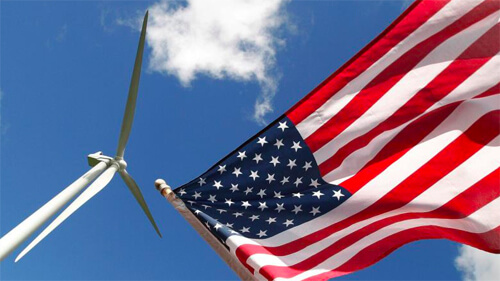Low-cost clean energy is one big step closer to reaching more American consumers thanks to a unanimous decision this week by the Missouri Public Service Commission (PSC) approving the Grain Belt Express transmission project. The long-distance, high-voltage direct current (HVDC) power line will reliably deliver large amounts of clean energy, including cost-saving wind power, to homes and businesses.

The Missouri Public Service Commission has officially approved the Grain Belt Express transmission project. The long-distance, HVDC power line will reliably deliver large amounts of clean energy.
“Missouri’s Public Service Commission just handed consumers a big win by approving the Grain Belt Express project,” said Amy Farrell, Senior Vice President, Government and Public Affairs, American Wind Energy Association (AWEA). “Upgraded and new transmission lines open up America’s low-cost clean energy resources for consumers and make our grid even more resilient.”
Missouri’s approval creates strong momentum for the Grain Belt Express, but additional commercial and regulatory steps remain before construction can begin, including approval of the acquisition of the project in Kansas and Missouri by Chicago-based sustainable energy developer and operator Invenergy.
The PSC’s decision indicates those steps are well worth taking, noting that the Grain Belt Express project is in the public interest in part because it will facilitate the growth of affordable, reliable, safe and clean wind power. Nationally, wind power is now the lowest cost source of new electricity generation on average.
“America’s energy infrastructure needs a reboot to efficiently serve the 21st Century economy,” said Farrell. “But we can’t get there without transmission planning and permitting reforms at the regional and federal level. Regulatory decisions shouldn’t take years for projects so clearly in the public interest.”
Transmission projects, like Grain Belt Express, are essential as the U.S. transitions to a cleaner energy mix. Infrastructure constraints are increasingly preventing consumers from accessing the full cost-saving potential of wind and other clean energy resources. That’s because America’s transmission lines were largely designed and built before renewable energy became mainstream. Frequently, transmission lines do not reach some of the windiest parts of the country, which can generate wind energy at the lowest cost.
Studies frequently find that connecting low-cost energy sources to homes and businesses through well-designed transmission projects provides significant benefits to consumers.
Filed Under: News, Projects




